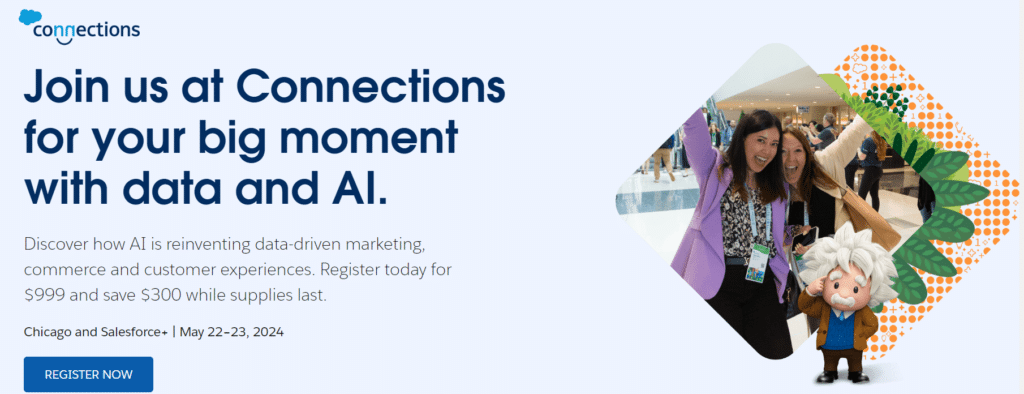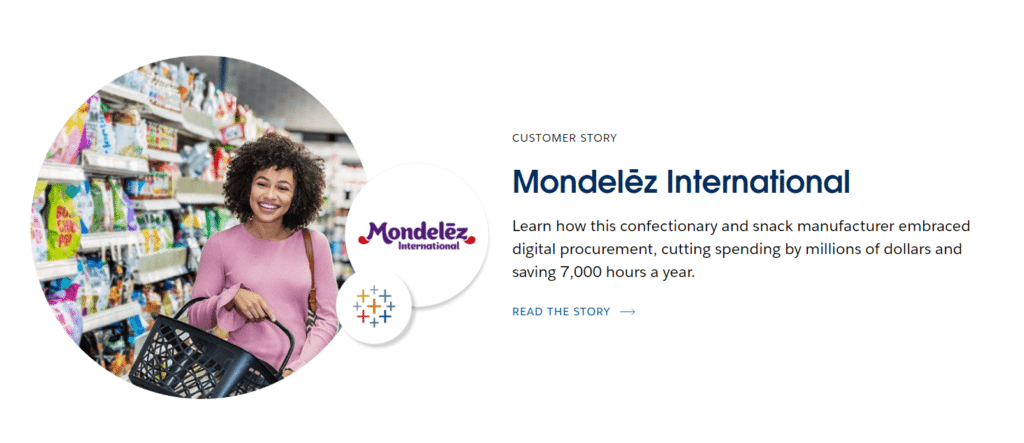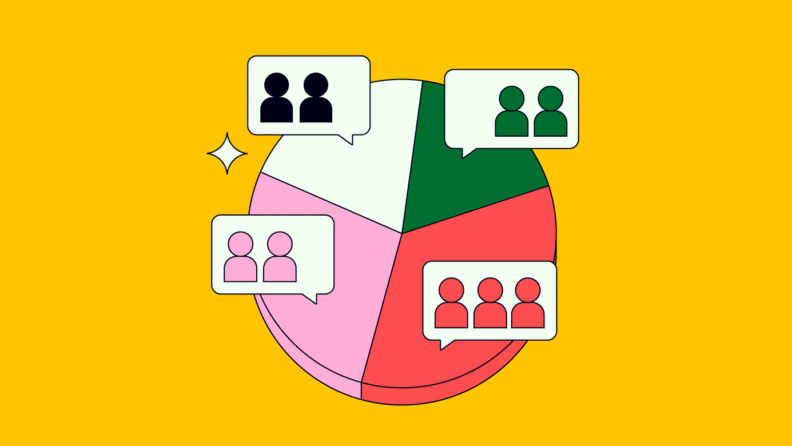If you’ve been working in marketing for a while, you know that a spray-and-pray approach is a surefire path to burning through budgets. Customers today expect a premium experience tailored just for them, from the initial marketing touchpoints through the product experience itself. Failing to properly segment your target audience and ignoring segment-specific strategies is a recipe for low conversion rates, high customer churn, and missed revenue opportunities.
The path to marketing success and business growth lies in laser-focused market segmentation, allowing you to identify your highest-value customer personas. Here I’ll share the seven main types of market segmentation, creating a helpful framework for identifying your high-value customer segments and tailoring your brand's entire customer experience for them.
What Is Market Segmentation?
Market segmentation is the process of dividing a large market into smaller groups of consumers or businesses that share common characteristics. These could be demographics like age and income level, behaviors like purchase habits and technology usage, or psychographics like values and lifestyle.
For companies using account-based marketing (ABM), segmentation is extremely important. ABM is all about identifying and marketing directly to the highest-value prospective target account lists.
Through segmentation by company characteristics (firmographics) and signals of interest (intent data), marketers can define their ideal customer and zero in on the accounts most likely to buy. This allows for a highly personalized account-based marketing strategy and campaigns tailored to each specific account's situation, needs, and pain points.
Why is market segmentation important?
Market segmentation is important because it allows you to better understand your customer base and precisely target them, avoiding wasted ad spend. Without segmentation, you'd be taking an approach that is generic in nature, offering new products and services to all prospects with the same messaging.
According to Twilio’s 2022 State of Personalization report, consumers tend to spend more money on a service when they have a personalized experience from the business. In fact, 80% of business leaders say that consumers spend an average of 34% more with a personalized experience.
Types Of Market Segmentation

1. Demographic segmentation
Demographic segmentation is one of the most common approaches, dividing target markets into segments based on statistical characteristics of a population. Key demographic variables include:
- Age
- Gender
- Income
- Education level
- Employment status
- Marital status
- Family status
This allows marketers to target very specific profiles that are more likely to show interest in their product or service based on demographic traits.
For example, a marketing automation vendor may segment their total market by company size and employee count. Their positioning, messaging, and offering tiers can then be customized for SMB versus mid-market versus enterprise segments.
2. Geographic segmentation
As the name implies, geographic segmentation organizes markets into different groups of people based on geographic location like:
- Countries
- States
- Regions
- Cities
- Rural areas
- Neighborhoods
This approach accounts for how consumer needs and product preferences can vary across locations due to factors like climate/environmental differences, population density (urban vs. rural), cultural norms and local laws/regulations and language and ethnic breakdowns.
For B2B companies operating globally, geographic segmentation is critical to account for regional differences in regulations, business norms, and buyer expectations. In many cases, marketing messaging and product functionality may need to be customized for each country or region.
3. Psychographic segmentation
While demographic traits provide the straightforward facts about a consumer, psychographic segmentation seeks to go deeper into qualitative attributes like:
- Personal values and attitudes
- Interests and hobbies
- Opinions and political ideologies
- Personality types and lifestyles
Looking through this psychographic lens gives brands greater insights into the motivations and belief systems consumers have that drive their buying decisions.
As an example, many technology brands shape their product experience and go-to-market strategies around segments of "early adopters" and "tech-savvy professionals" motivated by utilizing cutting edge solutions.
4. Behavioral segmentation
Rather than looking at who consumers are, behavioral segmentation focuses on how different segments act. This groups customers based on things like:
- Observed actions
- Usage patterns
- Spending habits
- Brand loyalty
For example, an ecommerce brand may segment out their highest-value "frequent buyer" customers that drive a disproportionate amount of revenue, in order to double down on loyalty offers. Another example, software companies may identify their power user base—those who critically use certain feature sets—for targeted upsell and cross-sell marketing campaigns.
Behavioral data is gold for segmentation. Prospects' content consumption patterns, webinar attendance, website browsing behaviors, and email engagement signals can all be tracked to gauge buying intent and interest levels. This allows campaigns to be hyper-personalized based on where each lead currently is in their unique buyer's journey.
5. Firmographic segmentation
While demographics and psychographics apply to individual consumers, firmographic segmentation is the B2B equivalent for organizations. It looks at attributes about companies like:
- Industry/verticals
- Company size/employee count
- Annual revenue/sales
- Growth rate and future projections
- Technology stack and software used
Using these criteria helps B2B vendors cut through the noise and zero in on their ideal customer profiles for prospecting and marketing prioritization. A CRM platform provider, for example, may prioritize specific verticals where they have the highest penetration rates and can deliver the most value like technology or professional services.
6. Journey stage segmentation
While behavioral data reveals where prospective buyers currently are in their purchasing journey, journey stage segmentation is a strategic approach to mapping out audiences based on their specific phase in the customer lifecycle, such as:
- Awareness/education stage
- Consideration/evaluation stage
- Purchase/decision stage
- Onboarding/adoption stage
- Retention stage
Early-stage "awareness" audiences may just be conducting topical research, so broad, educational content works well. Consideration segments get more in-depth product exploration and competitive comparisons.
7. Transactional segmentation
Sometimes referred to as "interaction segmentation", this lens zooms in on the specific types of interactions, transactions, and micro-behaviors a consumer has with a brand across their entire experienced journey. Segments are defined by tangible actions and transaction events like:
- Shopping/purchase behaviors (cart abandons, repeat purchases, etc.)
- Website/app activity trails (content consumption, feature usage, etc.)
- Communication and support interactions
Benefits Of A Market Segmentation Strategy
More effective marketing and sales
By segmenting your audiences, you can precisely tailor marketing messages, sales strategies, and product offerings to resonate with each segment's unique needs, pain points, and buying behaviors. This hyper-relevance dramatically improves ABM metrics like click-through rates, lead quality, sales cycles, and conversion rates.
Account based marketing software allows you to operationalize your segmentation strategy by concentrating your marketing investments on the specific high-value accounts within your most profitable segments. Everything from ad targeting to content syndication, sales plays, and orchestrated channel experiences get tailored for each prioritized account.
New markets and opportunities
The market segmentation process often reveals audiences and segments your company was previously unaware of or under-appreciating. These could represent entirely new markets, untapped revenue streams, or valuable customer tiers flying under the radar. For example, a software company may initially think their ideal customer is large enterprises. But psychographic segmentation could unveil a passionate cohort of smaller firms and startups being underserved.
By properly defining the unique needs of these segments, you can adapt your positioning, ABM tactics, and even product roadmap to unlock their value. This allows expanding into lucrative verticals, customer tiers, or use cases that your competitors are neglecting or unable to adequately serve.
Higher quality leads
One of the biggest challenges marketers face is wasting time and resources nurturing unqualified leads that realistically will never convert. By focusing marketing spend and sales efforts on your highest-value, best-fit audience segments, you naturally increase the quality of inbound leads. Lookalike modeling can further amplify this by expanding targeting to similar premier segments at scale and using ABM personalization to capture them.
This eliminates unqualified leads from ever entering your marketing and sales funnels in the first place. The inbound inquiries you receive will inherently be much more qualified, having already cleared the prerequisite filters of fitting your ideal customer profile to a tee. No more chasing dead-end leads or long sales cycles with skeptical prospects.
Lower costs
Properly implementing a segmentation strategy allows you to drastically reduce costs across multiple areas of marketing and sales. Without segmentation, you inevitably waste large portions of your marketing budget reaching audiences who will never purchase.
This precision approach minimizes wasted impressions and pays off in much higher conversion rates. Your cost-per-acquisition (CPA) figures improve since you're not spending money on utterly unqualified tire-kickers. You can re-allocate those saved marketing dollars to double down on your highest-value segments.
Greater customer loyalty
Segmentation isn't just valuable for attracting potential customers. It's equally crucial for retaining them and cultivating long-term loyalty after the initial sale. With hyper-relevant experiences delivered to accounts consistently across all touchpoints, you create "wow" moments that delight customers and nurture stronger affinity.
Challenges Of A Market Segmentation Strategy
Higher upfront expenses
Implementing a comprehensive segmentation approach requires significant upfront investments in research, technology, and training that can strain budgets initially. Costs include market research to identify and validate key segments, customer data platforms to collect unified profiles, marketing automation tools to execute segment-specific campaigns, and change management to upskill teams on the new segment-centric approach.
Higher reliance on good data
Segmentation is only as effective as the underlying customer data quality. Incomplete, siloed, or inaccurate data about your customers and prospects will lead to poorly-defined, unrepresentative segments. Without the proper systems and governance to centralize comprehensive behavioral, descriptive, and attitudinal data sources, your segments won't align with real-world audiences. Garbage data leads to garbage segmentation.
Risk of misassumptions
Even with solid data, there's the potential to make incorrect assumptions about segment profiles that derail your entire strategy. Demographic data is prone to generalization across audiences. Perceived psychographic profiles may not match actual motivations. Upfront persona assumptions require continuous validation through observed data and market research to course-correct biases and misassumptions before they perpetuate.
Examples Of Market Segmentation
Example 1: Behavioral Segmentation

Asana segments its users based on engagement levels, focusing on those who use the platform intensively. This often includes project managers and teams in tech companies who need extensive collaboration tools. Asana targets this segment with features like advanced task management, integration options, and custom workflows to enhance productivity and customer retention.
Example 2: Geographic Segmentation

Salesforce has a targeted approach for SMBs in North America, offering tailored solutions that fit the scale and budget of smaller businesses. Their marketing strategies often include localized events, marketing webinars, and region-specific sales teams to help these businesses leverage Salesforce's CRM to grow and manage customer relationships effectively
Example 3: Firmographic Segmentation

Tableau segments its market by company size, focusing on enterprise-level organizations that have extensive data analysis needs. This segmentation allows Tableau to specifically target larger businesses that are likely to require comprehensive, scalable analytics solutions capable of handling large data sets and supporting a broad user base. Marketing efforts are tailored to emphasize the robustness, security, and integration capabilities of Tableau’s software, appealing directly to the customers’ needs of large organizations.
Join For More Targeted Insights
When you connect with customers' true motivations and pain points in a relevant way, you'll see the benefits in more effective marketing, lower costs, easier sales, and greater customer loyalty. Through market segmentation, you gain that superpower.
From reading this guide, hopefully you walk away with 3 key takeaways:
- There are 7 main types of market segmentation you should leverage: demographic, geographic, psychographic, behavioral, firmographic, journey stage, and transactional.
- Proper segmentation lets you expand into new markets by understanding underserved audiences.
- While segmentation requires upfront investment, it pays massive dividends in improved ROI and customer lifetime value.
Want to dive deeper into cutting-edge segmentation strategies used by leading brands? Subscribe to The CMO newsletter and get real-world examples and expert insights delivered straight to your inbox.


